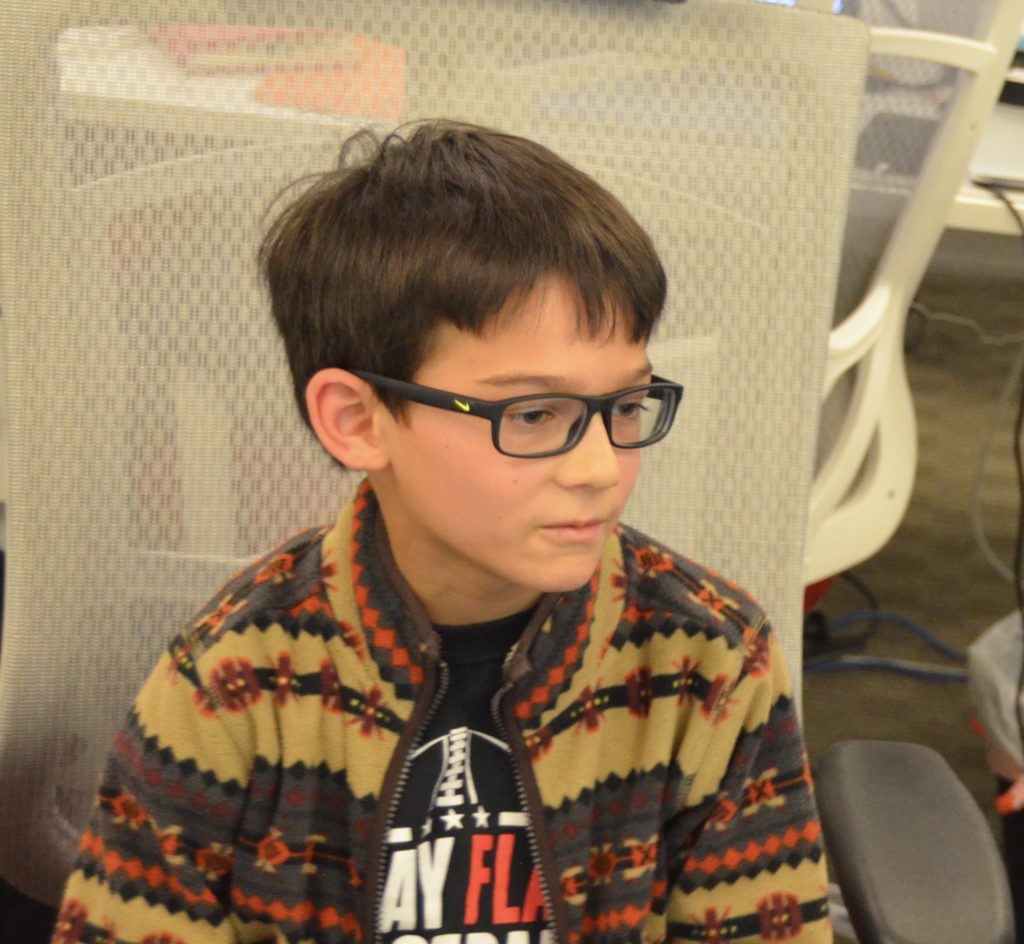
NASA and Tynker Mission Patch Design Challenge: The Winners
Tynker and NASA STEM Engagement teamed up to bring the first of three “Moon2Mars” challenges to kids worldwide. Following NASA astronauts’ tradition of designing mission patches, kids were asked to create their own patch for an imaginary spacesuit with code. Thousands of kids rose to the occasion, submitting nearly 10,000 unique and creative animated ‘Forward to the Moon’ patches.
Of those, NASA experts selected five winners from across the globe: Ishhaq Ziyam (6th Grade, Colombo, Sri Lanka); Neal Apte (3rd Grade, Palo Alto, CA, USA); Madison Morgan (8th Grade, Lewiston, ID, USA); Paxton Summers (3rd grade, Baltimore, MD, USA); and Wei Rui Teng (7th Grade, Miri, Malaysia).
This is Part One of a two-part series about the results of the mission patch challenge. Read more about the winners here, and learn about their experiences speaking with NASA experts in Part Two!

Winner Ishhaq Ziyam is a 6th grader from Colombo, Sri Lanka. He attends Wycherley International School and created a patch that shows his take on the future of space travel! In it, a rocket takes off from Earth, and a rover descends to colonize the Moon. He then predicts the future on Mars! He and his twin Ismail (pictured) have always been fascinated by space travel! His win was covered by Colombo Gazette, and UTV, among other outlets. Congratulations, Ishhaq!
Ishhaq’s winning patch

Winner Madison Morgan is from Lewiston, ID, USA. Madison is an 8th grader at Sacajawea Junior High. Her patch is a beautiful, twinkling rendition of the Moon, Mars, and the constellation Orion. DailyFly, a local Lewiston news outlet, even covered her winning submission! The article writes that “she animates Orion to shoot the shuttle from his bow onto the red planet.” Congratulations, Madison!
Madison’s winning patch

Winner Neal Apte is a 3rd grader at Barron Elementary school in Palo Alto, CA, USA. He coded a cool animated representation of a NASA mission for his patch project. Neal’s hometown of Palo Alto is close to Tynker’s Mountain View office, so he was able to visit the Tynker team in the office. It was great to have him come in. Congratulations, Neal!
Neal’s winning patch

Winner Paxton Summers is from Baltimore, MD, USA. Paxton is a 3rd grader at Friends School of Baltimore and created a project that truly speaks for itself! He is pictured being interviewed for WBAL Baltimore. Congratulations, Paxton!
Paxton’s winning patch

Winner Wei Rui Teng is from Miri, Malaysia. He’s a 7th grader at Pei Min Secondary School who takes coding classes at Realfun Learning Centre. His patch features spinning Earth, Moon, and Mars. The New Sarawak Tribune covered his win, as did TV Sarawak, Sin Chew, and The Sun Daily. The article states that he “did the whole country proud” by winning the mission patch design challenge. Congratulations, Wei Rui!
Wei Rui Teng’s winning patch
While your children or students await the next two Moon2Mars challenges (to be released in September and October 2019) check out other Tynker and NASA space-themed resources!
- NASA’s new Forward to the Moon Explorer Activities with fun activities for students ages 5-12;
- Peanuts and NASA: A 50th Anniversary Celebration Lesson Plans (K-5) which celebrates the nicknames of ‘Snoopy’ and ‘Charlie Brown’ given by the Apollo 10 crew to the Lunar Module and Command/Service Module;
- The NASA STEM Engagement website with resources for teachers to help make science exciting and meaningful for students;
- Tynker’s Space Quest, a coding puzzle for beginning coders, where students help the astronaut find a new spaceship;
- Lost in Space, for intermediate coders, where students help a spaceman named Biff get back home;
- Tynker’s Physical Science course, where educators can weave coding into their lesson plans, no matter what subject they teach; and
- Tynker’s latest Women in STEM blog posts about Margaret Hamilton–who helped write the source code for the Apollo 11 mission–and Christina Deoja, who’s currently an electrical engineer at NASA!
Read about the video chat sessions with NASA experts in Part Two of this blog series, ‘The Expert Sessions’!




